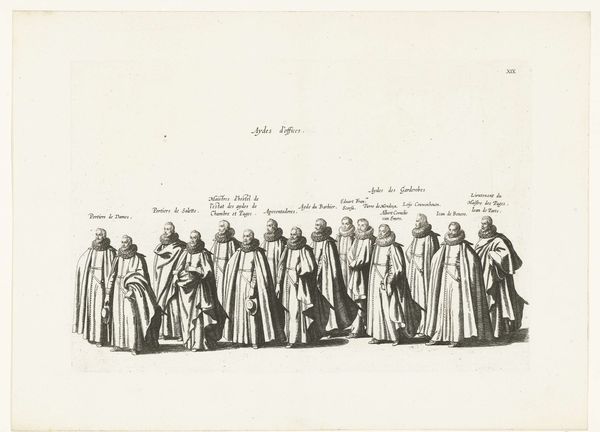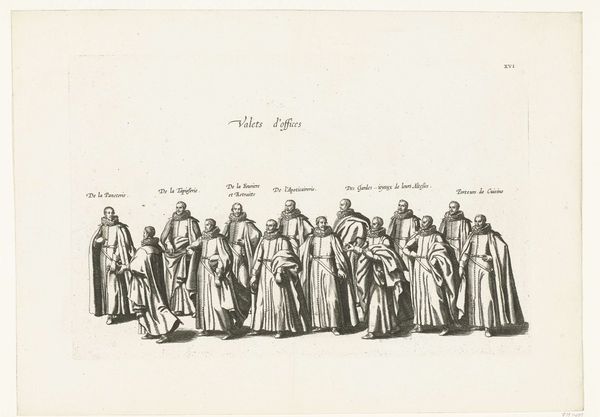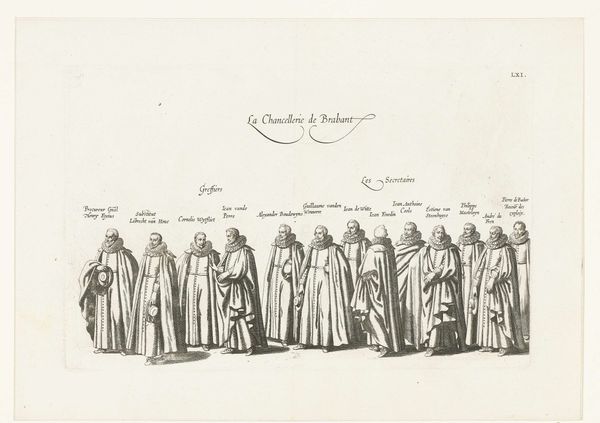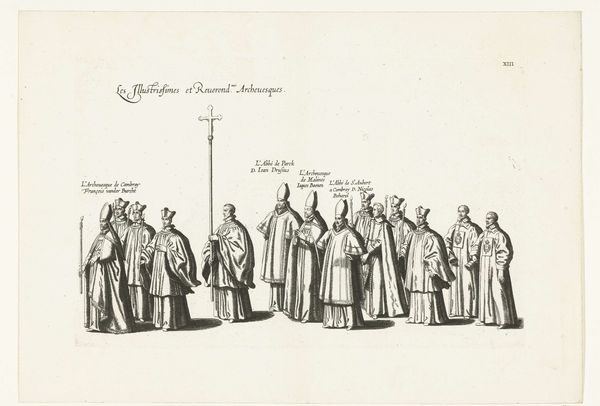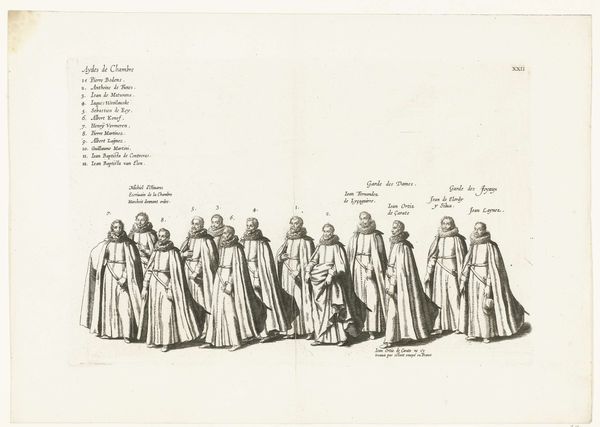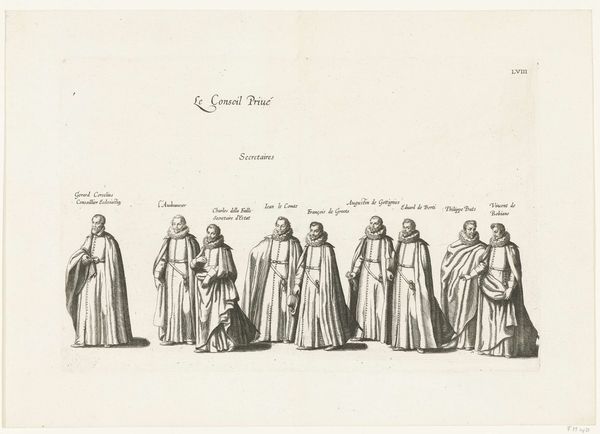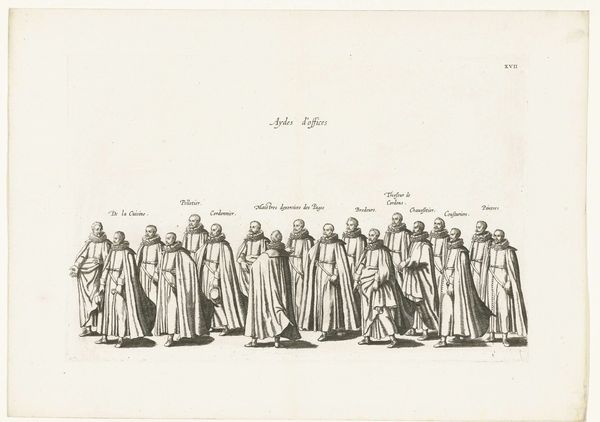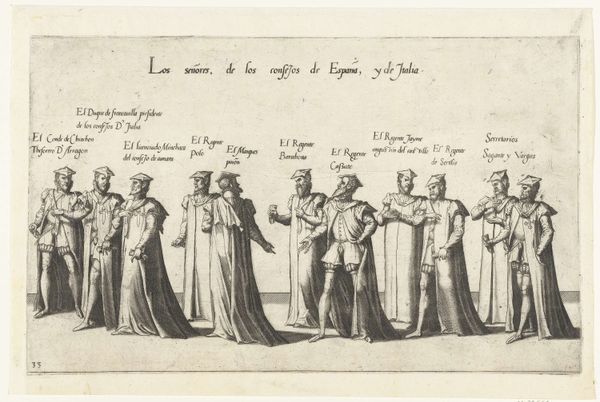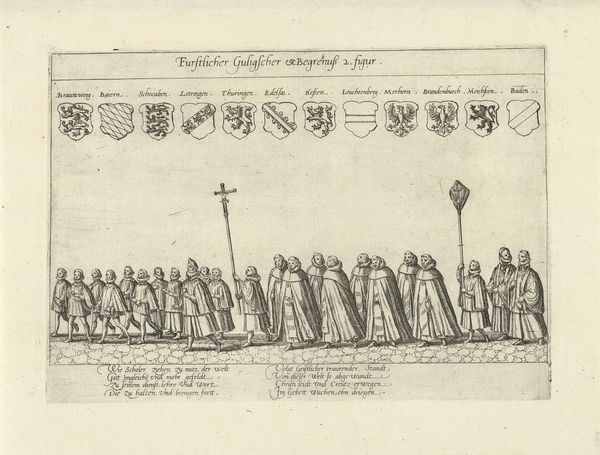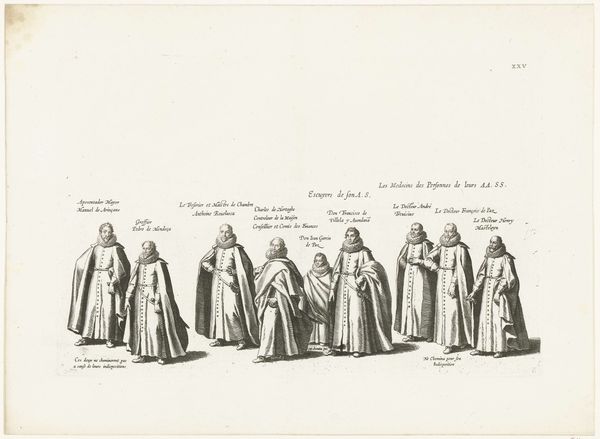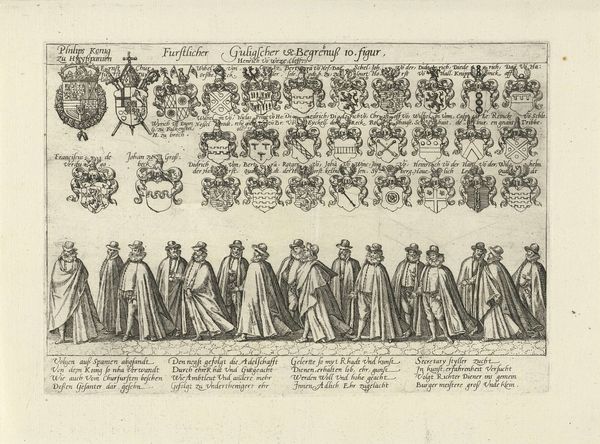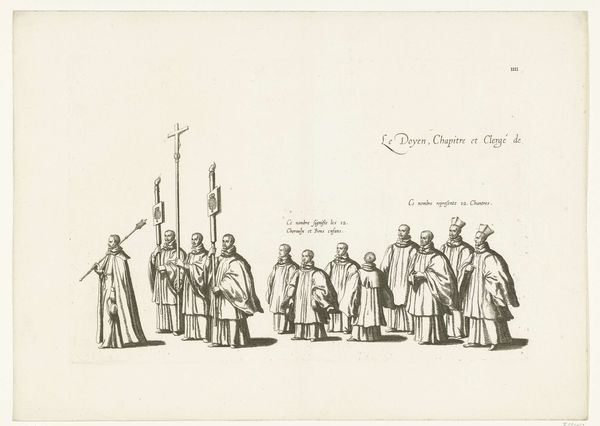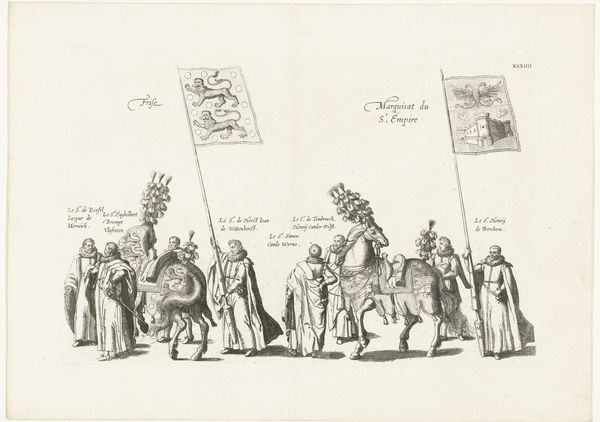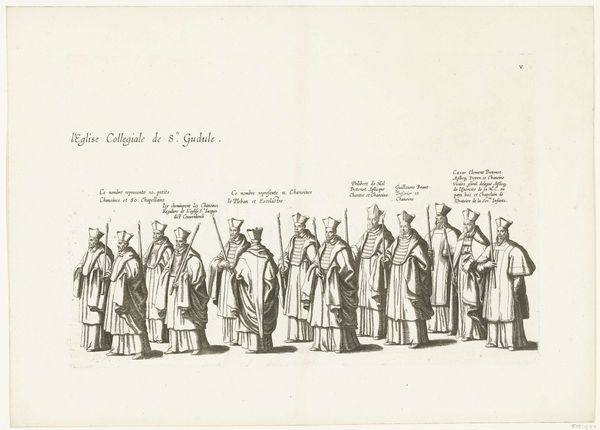
print, engraving
#
portrait
#
baroque
# print
#
old engraving style
#
group-portraits
#
history-painting
#
engraving
Dimensions: height 233 mm, width 359 mm
Copyright: Rijks Museum: Open Domain
Editor: Here we have "Begrafenisstoet van aartshertog Albrecht," or "Funeral Procession of Archduke Albrecht," an engraving from 1623 by Cornelis Galle I. It's housed here at the Rijksmuseum. The detail is really striking, especially in the robes. What do you see in this piece, considering its historical context? Curator: I see a powerful choreography of grief and state. Consider the repetition of figures, their faces mostly obscured. This isn't about individual mourning but collective memory. The robes themselves are fascinating; they function almost as masks, unifying the magistrates of Brussels in their civic duty. Each element signifies their station, transforming them into archetypes of governance. Note the script at the top that confirms "Le Magistrat de la Ville de Bruxelles". How might that inscription affect our interpretation? Editor: It reinforces the idea that this is less about personal feelings and more about a public performance of mourning, a symbol of the city's respect. Is that accurate? Curator: Precisely. The entire composition becomes a visual emblem of continuity. Even in death, power persists, re-asserted through ritual and representation. Think of the tradition of public mourning, how these processions were integral to reinforcing societal structures. Galle captures a moment laden with symbolism and meaning, it presents the role of state in personal emotion. What are your thoughts now? Editor: That really illuminates it! The engraving style now speaks to me of preservation, echoing how the city tried to fix its legacy in response to the death. I see now how carefully constructed the imagery is. Curator: Indeed. Every element carefully considered, contributing to the enduring iconography of power.
Comments
No comments
Be the first to comment and join the conversation on the ultimate creative platform.
